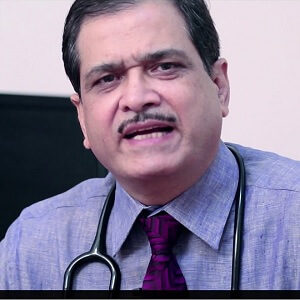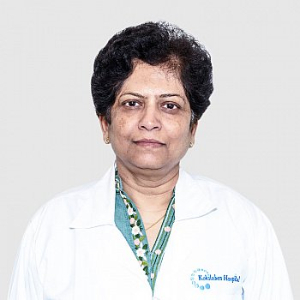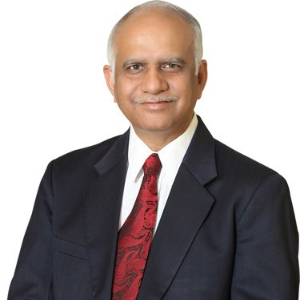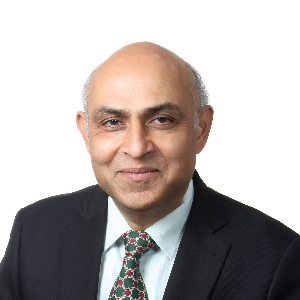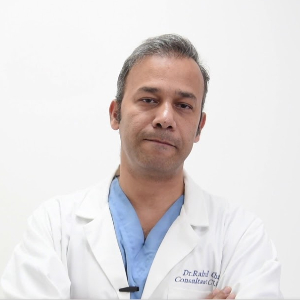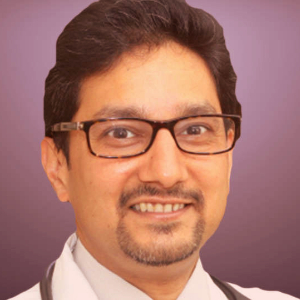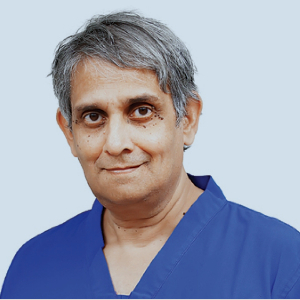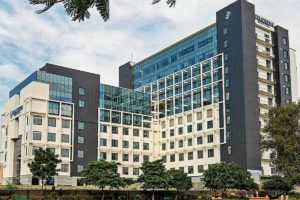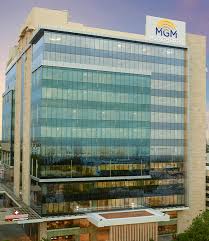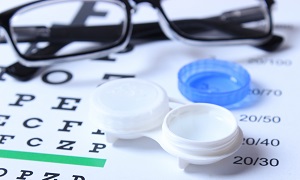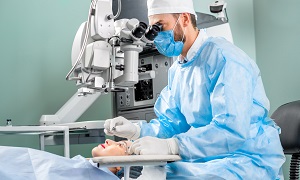Best Doctors in India for Marfan syndrome Treatment
- Interventional Cardiologist, New Delhi, India
- Over 26 years experience
Profile Highlights:
- Dr. Rajeev Kumar Rajput is one of the best Cardiologists in India with nearly 23 years of experience. He is a clinical cardiologist engaged in diagnosing and treating cardiovascular diseases.
- Dr. Rajput is currently working as a senior consultant with Indraprastha Apollo Hospitals, New Delhi, and also offers patient care at the Heart & Gynae Clinic.
- Dr. Rajeev Kumar Rajput specializes in Angiography and Interventional Cardiology. The treatments provided involve Neonatal and Infant cardiac surgeries, Device Closure, and Valve replacement. He has expertise in Aortic Aneurysm Surgery, Vascular Surgery, Percutaneous Coronary Interventions, Endovascular Repair, Cardiac Catheterisation, Open Heart Surgery, and MV replacement.
- Dr. Rajput is credited with publishing several papers in noted medical journals.
- Pediatric Cardiologist, Mumbai, India
- Over 20 years’ experience
Profile Highlights:
- Dr. Snehal Kulkarni is a renowned pediatric cardiologist who specializes in the management and treatment of fetal cardiac diseases, non-invasive pediatric cardiology, and Adult Congenital heart diseases.
- She is an expert in Diagnostic and Interventional Cardiac Catheterization, Stent implantation, Cardiac Pathology, and Balloon dilatation.
- She has more than 2 decades of experience in pediatric cardiology and has acquired her training from prestigious institutions in USA.
- Cardiac Surgeon, New Delhi, India
- Over 36 years’ experience
Profile Highlights:
- Dr. S. K Sinha is one of the top-most reputable cardiac surgeons in India who has performed over 10000 heart surgeries, 2000 minimal access cardiac surgeries cases and has 36+ years of rich experience.
- As one of the best cardiac surgeons in India, Dr. Sinha has both performed and taken lead as the administrative and clinical mentor in several cases where his supervision and mentorship paired with his vast knowledge have helped future cardiac surgeons shape their careers.
- Senior Consultant - Cardiology, Dwarka, New Delhi, India
- Over 35 years’ experience
Profile Highlights:
- Dr. Monik Mehta is one of the best interventional cardiologists in India for the implantation of heart failure devices.
- His specialization also lies in performing complex Angioplasties and complex coronary interventions.
- Having received his training from Mahidol University, Bangkok, Dr. Monik Mehta has also worked with the United Nations as a cardiologist in Cambodia.
- Currently, he works as a Senior Consultant – Cardiology, in Manipal Hospitals, Dwarka, New Delhi.
- Senior Cardiothoracic and Heart Lung Transplant Surgeon, New Delhi, India
- Over 23 years’ experience
Profile Highlights:
- Dr. Rahul Chandola is a renowned cardiothoracic and vascular surgeon in India specializing in Adult CTVS along with heart and lung transplant surgeries.
- He is an expert heart and lung transplant surgeon and has performed over 100 heart transplant surgeries with successful results in both adult and pediatric patients.
- Currently, he works as a Senior Cardiothoracic and Heart Lung Transplant Surgeon in PSRI Hospital, New Delhi.
- Interventional Cardiologist, New Delhi, India
- Over 20 years’ experience
Profile Highlights:
- Dr. Vishal Rastogi is a leading Interventional Cardiologist in Delhi specializing in Heart Failure Management.
- Dr. Vishal Rastogi has over 20 years of experience in the field and holds the credit for the largest number of Impella Left Ventricular Assist Device (LVAD) implants in critically ill patients in India.
- He has performed a large number of Coronary and Peripheral Angiographies and diagnostic cardiac catheterizations in both adult and pediatric patients among several other interventional cardiac procedures.
- Cardio Thoracic & Vascular Surgeon, Mumbai, India
- Over 30 years’ experience
Profile Highlights:
- Dr. Anvay Mulay is a well-known cardiothoracic and vascular surgeon in Mumbai and one of the best heart transplant surgeons in India.
- He holds an extensive experience of close to 3 decades and has been associated with renowned cardiac hospitals in India, US, and UK.
- Dr. Mulay is one of the top surgeons for Adult cardiac procedures in India. He was the first to introduce LVAD in West and Central India when he performed the surgery on a 49-year-old patient.
- Cardiothoracic & Vascular Surgeon, Hyderabad, India
- Over 30 years’ experience
Profile Highlights:
- Dr. G Rama Subramanyam is a well-known cardiothoracic and vascular surgeon who specializes in open-heart surgery and has performed more than 5000 such procedures since 1997.
- He is also an expert in Minimally Invasive Coronary Artery Bypass Grafting and heart valve surgeries that includes over 200 Ischemic mitral valve repair surgeries and 100 myxomatous and Rheumatic mitral valve repair surgeries.
- Heart Lung Transplant Surgeon, Chennai, India
- Over 40 years’ experience
Profile Highlights:
- Dr. K R Balakrishnan is a highly coveted cardiac surgeon in India and is probably one of the best heart transplant surgeons in the country.
- He has performed the largest number of heart transplants in the country including 180+ heart transplants, 23 lung transplants, and 9 heart & lung transplant procedures. He performed the first permanent artificial heart transplant in India with HeartMate II LVAD.
- Dr. K R Balakrishnan has over 40 years of experience in the field and has the expertise to perform cardiac surgeries on patients of all ages. He has performed over 16000 cardiac surgeries for various types of heart diseases and disorders till date.
- Cardiac Surgeon, Noida, India
- Over 30 years’ experience
Profile Highlights:
- Dr. Manoj Luthra is a highly experienced and renowned Cardiac surgeon who has 30+ years of experience and performed the first heart transplantation surgery in the Indian Armed Forces.
- Till date, Dr. Manoj Luthra has performed more than 12,000 cardiac surgeries including 8000 heart bypass surgeries. He has also performed many heart transplants and aneurysm surgeries.
Best Hospitals in India for Marfan syndrome Treatment
Lilavati Hospital & Research Centre, Mumbai
- City: Mumbai, India
Hospital Highlights:
- Lilavati Hospital & Research Centre is India’s premier multi-speciality tertiary care hospital and has been recognised as a global medical excellence centre.
- Lilavati Hospital & Research Centre has built an unrivalled level of trust with its patients over the years, thanks to a solid foundation that comprises cutting-edge facilities, the best medical competence, research, education, and charity endeavours.
- The hospital is quite proud of the fact that it now serves patients from all kinds of backgrounds, not just from the United States but from all around the world.
- The hospital has a total of 323 beds, one of the largest Intensive Care Units (ICUs), 12 Operation Theatres with modern amenities, over 300 consultants, and almost 1,800 personnel.
Venkateshwar Hospital, Dwarka, New Delhi
- City: New Delhi, India
Hospital Highlights:
- State-of-the-art technology and devoted healthcare professionals have been brought together under one roof at Venkateshwar Hospital to provide genuine medical care. The hospital’s professionals work together as a team to deliver the best possible treatment to their patients, using the most sophisticated equipment and information technology.
- Venkateshwar Hospital’s mission is to attain global excellence in healthcare by employing evidence-based, ethical clinical practices and cutting-edge technology by a team of highly skilled experts.
Marengo Asia Hospital, Faridabad
- City: Faridabad
Hospital Highlights:
In the sprawling city of Faridabad, where healthcare needs are diverse and ever-evolving, one institution has consistently stood out as a beacon of excellence in the field of medicine—Marengo Asia Hospital. Established with a vision to provide world-class healthcare services to the community it serves, Marengo Asia Hospital has emerged as a trusted name synonymous with quality, compassion, and innovation in healthcare.
MGM Healthcare, Chennai
- City: Chennai, India
Hospital Highlights:
- Located in Chennai, India, MGM Healthcare is a top multispecialty hospital that provides all medical services under one roof.
- Since its founding in 2019, MGM Healthcare has quickly become a leading national referral centre, creating several innovative flagship initiatives.
- MGM Healthcare combines next-generation medical and digital technologies to provide better patient results.
- With 12 centres of excellence, more than 400 inpatient beds, 100 intensive care unit beds, and 24/7 emergency care, MGM Healthcare leaves no chance in redefining the patient experience in Chennai.
- MGM Healthcare boasts 250+ expert doctors across 30+ departments, including Cardiology, Pulmonology, Neurology, Obstetrics & Gynaecology, and more.
- They house 12 specialized Centres of Excellence, including Neurosciences, Orthopaedics, and Multi-Organ Transplantation.
- Their team of doctors, nurses, and paramedics works together to give every patient individualized treatment.
Marfan Syndrome
Marfan syndrome is an inherited disorder, which affects the connective tissue in the body, which gives support and strength to various parts of the body such as cartilage, blood vessels, etc. This syndrome usually affects the eyes, blood vessels, the heart and the skeleton.
Usually tall and skinny people are victims of this syndrome. They might also have disproportionately long arms, fingers, legs and toes. Sometimes this ailment can be mild and at other times, quite severe. The large blood vessel which carries blood from your heart to the rest of the body is called the aorta. If this gets affected, your condition might be life-threatening.
Treatment for Marfan syndrome usually includes medications to help keep the blood pressure low, to reduce strain on the aorta. It is also important to monitor it regularly and check for damage progression. Most people suffering from this ailment eventually require preventive surgery for repairing the aorta.
Symptoms of Marfan Syndrome
These signs and symptoms of this illness can vary greatly, even among family members. Though some people experience only mild effects, others can develop life-threatening complications. In many cases, the disease also gets worse as one age.
Some of the symptoms of Marfan syndrome:
- Tall and Slender Build
- A breastbone protruding outward or dipping inward
- Disproportionately long arms, fingers, and feet
- Heart murmurs
- Extreme nearsightedness
- Abnormally curved spine
- Flat feet
Causes and risk factors
Marfan syndrome is caused by a change in the gene which controls how the body makes fibrillin, which is an essential part of connective tissue that can help to make it strong and elastic.
Marfan syndrome happens equally among both genders. In most cases, this ailment is inherited from a parent. People with this ailment have a 50% risk of passing down to their offspring. In some people with this syndrome, the gene changes without a clear cause.
Diagnosis of Marfan Syndrome
Marfan syndrome can be quite challenging for doctors to diagnose, as many connective tissue disorder have similar signs and symptoms. Even among some members of the same family, the signs and symptoms of Marfan syndrome vary widely, both in features as well as severity.
Certain combinations of symptoms and family history need to be presented to confirm a diagnosis of Marfan syndrome. In some cases, a person might have some features of Marfan syndrome, though not enough of them for a diagnosis of the syndrome.
Heart Tests
When a doctor suspects Marfan syndrome, usually the first test that is recommended is an echocardiogram. With the use of sound waves, this test captures real-time images of your heart in motion. It checks the condition of your heart valves as well as the size of your aorta. There are also other heart imaging options such as computerized tomography scans as well as magnetic resonance imaging.
If you are diagnosed with Marfan syndrome, regular imaging tests will be required for monitoring the size and condition of your aorta.
Eye Tests
Eye exams that might be needed can include:
- Slit-lamp exam- This test checks for lens dislocation, a detached retina as well as cataracts. For this exam, your eyes will have to be dilated as well.
- Eye pressure test- To check for signs of glaucoma, your eye doctor might measure the pressure inside your eyeball by touching it with some kind of special tool. Usually, before this test, numbing eye drops are used.
Genetic Testing
Genetic testing is also often used for confirming the diagnosis of Marfan syndrome. If a Marfan mutation is found, family members can also be tested, to see if they are affected as well. You might consider talking to a genetic counselor, before you start a family, to see your chances of passing on Marfan syndrome to your future children.
Treatment options for Marfan Syndrome
There is no known permanent cure for Marfan syndrome and the treatment focuses on preventing the various complications of the ailments. For achieving this, you need to be checked regularly for signs that the damage caused by the disease is progressing.
In the past, people suffering from Marfan syndrome usually died young. But with modern treatment as well as regular monitoring combined, people suffering from this syndrome can live up to a normal life span.
Medications
Therapy
Surgery and Other Procedures
Depending upon the signs and symptoms, procedures might include:
Aortic repair
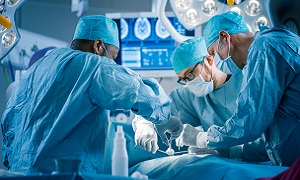
If you aorta’s diameter reaches around 2 inches or if it enlarges quickly, your doctor might recommend an operation for replacing a portion of your aorta with a synthetic tube. This will help to prevent a rupture which can be life-threatening. Your aortic valve might also require replacement.
Scoliosis treatment
When there is significant scoliosis, a consultation with a spine expert is important. In some cases, bracing and surgery might be needed.
Breastbone corrections
For correcting the appearance of a sunken or protruding breastbone, one can choose to go for surgery. However, one should remember that these operations are considered to be for cosmetic purposes and therefore, your insurance may not cover your costs.
Eye Surgeries
Complications
Marfan syndrome can affect several parts of the body, leading to various kinds of complications, some of them including-
- Damage to the aorta: This can be considered one of the biggest threats of Marfan syndrome. Your aorta is the artery that carries blood from your heart to the rest of your body. Marfan syndrome can break open the aorta’s inner layers and cause dissection or bleeding in the wall of the vessel. Aortic dissection might be deadly. You might also require surgery for replacing the aorta’s affected parts.
- Mitral valve prolapse: Some people who suffer from Marfan syndrome also have a condition that causes billowing of the heart valve. This may be linked with uneven or rapid heartbeats as well as shortness of breath. It might need surgery.
- Lens dislocation: The lens in our eye, which focuses on your vision, might move out of place, which leads to a condition called ectopia lentis.
- Glaucoma or cataracts: Marfan syndrome can increase your chances of getting eye ailments like cataracts or glaucoma at an early age.
- Skeletal issues: People with this syndrome are also more likely to have a curved spine, unusual ribs, back pain and foot pain.
- Pregnancy complications: Because pregnancy increases the amount of blood in the body and aorta which is weakened by Marfan syndrome is at a higher risk of a rupture or dissection during pregnancy.

